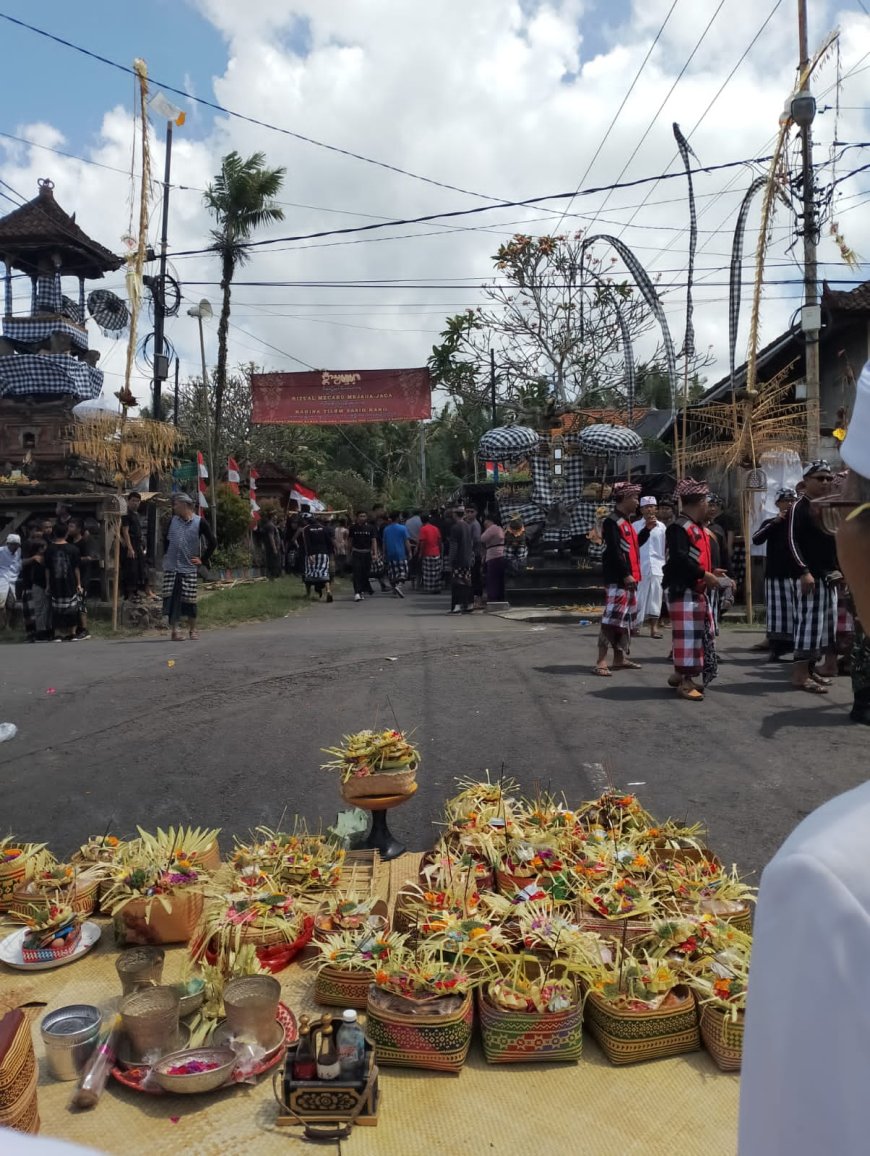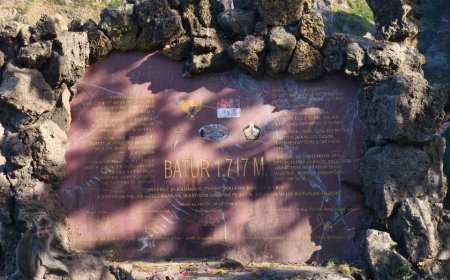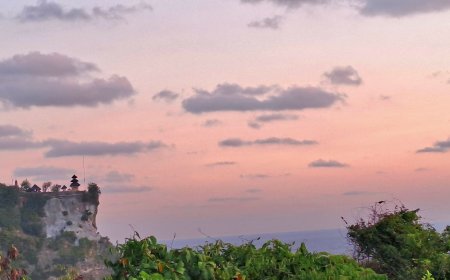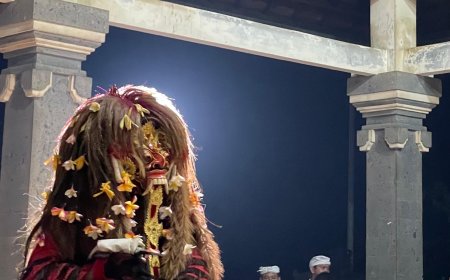Mejaga-Jaga: Sacred Caru Seizes the Blood of a Cow Slashed by Blakas Sudamala
Perhaps, we are familiar with the fact that Bali is one of the many small islands that have various unique traditions. These traditions are what make Bali loved by the people, both Indonesians and foreign tourists. However, as time goes by, these traditions are starting to be eroded by the times. Even so, there are still a number of traditions in Klungkung Regency that are still routinely carried out and preserved to this day. One of these unique traditions is "Mecaru Mejaga-Jaga" or known as mecaru sampi which has even been recorded in intangible cultural heritage. Are you curious about how unique this tradition is?
Tradition refers to a set of customs, practices or values that are passed down from generation to generation within a particular society or group. Traditions cover various aspects of life, such as traditional ceremonies, rites, marriage procedures, customs, languages, arts, and cultural values that are carried out repeatedly from one generation to the next.

Mecaru Mejaga-Jaga Tradition (Source: Personal Collection)
Traditions usually reflect the identity of a group or society, and are often an integral part of their daily lives. Traditions can play an important role in shaping and maintaining social relationships, family structures and respected values within a community.
While some traditions may undergo changes or modifications over time, many are diligently maintained as part of a cultural heritage. Traditions can be passed on through stories, ritual practices, symbols and other forms of cultural expression. The continuation of traditions is often a way to maintain cultural identity and celebrate ancestral heritage.
One tradition that exists in Bali and is still less exposed is the Mecaru Mejaga-jaga tradition. This tradition from Besang Kawan Tohjiwa Traditional Village, Semarapura Kaja, Klungkung Regency has even been registered as an Indonesian Intangible Cultural Heritage (WBTB).

Mecaru Mejaga-Jaga is a religious traditional practice that has been held since migrants from Tohjiwa Village, Karangasem Kingdom, arrived in Klungkung in 1750, after the Karangasem-Klungkung War. The migrants, along with their families, moved to Klungkung and submitted themselves to the King of Klungkung Ida Dewa Agung. They brought goods and cultural heritage in the form of Pusaka objects, such as Kentongan (Kulkul), Tombak, Keris, Parang Sudamala, and intangible elements in the form of Religious Ritual Traditions of "holy sacrifice," namely holy offerings to the elements of the universe (Panca Mahabuta), known as Caru Mejaga-Jaga.
The ritual or holy offering (Bhuta Yadnya), known as Caru Mejaga Jaga, is held after the migrants are received by Ida Dewa Agung, the King of Klungkung, and directed to a settlement called Desa Adat Besang Kawan Tohjiwa. The name Tohjiwa is perpetuated in honour of the migrants' original traditional village, the Tohjiwa Village of the Karangasem Kingdom. Since living in Besang Kawan Tohjiwa Traditional Village in 1750. The Mecaru Mejaga Jaga ritual tradition, as an intangible cultural heritage, has been consistently held every year during the dead moon (Tilem) in the Balinese calendar, which coincides with the second month (Sasih Karo).
The main tool in the implementation of this tradition is a castrated bull (Sapi Cula) based on specific criteria and characteristics, namely red fur, the tail should not be “Panjut”, there are no scars, not colourful (Tutul) and the position of the horns is upright (Tongklok Tangeb).
The cow tied with seven ropes is first paraded northwards until it reaches the northern end of the village, in front of the local Puseh Temple. There, a ceremonial procession is held, and the cow is then slaughtered on the right buttock by the Catus Pata priest, using the sacred Sudamala machete or blakas. The cow's blood is seen scattered around. The cow is then paraded back southwards, reaching the village boundary in front of Pura Dalem. Another ceremony is held there, and the cow is again slaughtered, this time on the left buttock. Next, the cow is again paraded eastwards until it reaches the village border in the east. There, the tired-looking cow is again slaughtered on the right buttock.
It is explained by local residents that the cow's blood is believed to be a sacrifice to protect the local village, both in sekala and niskala. In fact, it is believed that the cow's blood has healing properties against diseases. Therefore, locals compete for the blood and use it to smear on their bodies and faces in an effort to neutralise or cleanse nature.

Sapi Cula at Mecaru Mejaga-Jaga Tradition (Source: Personal Collection)
The Caru Mejaga Jaga ritual is not just a traditional ceremony, but a form of devotion and respect to Ida Sanghyang Widi Wasa, to fellow humans, the universe, and Bali's cultural heritage. Through the practice of Bhuta Yadnya, which is one part of Panca Yadnya, the main goal is to continue to remind Balinese Hindus to maintain harmony and sustainability in the concept of Tri Hita Karana. With great pride, let us continue to preserve and celebrate the deep meaning of the Caru Mejaga Jaga ritual, as a sacred offering that brings happiness and prosperity.
































































